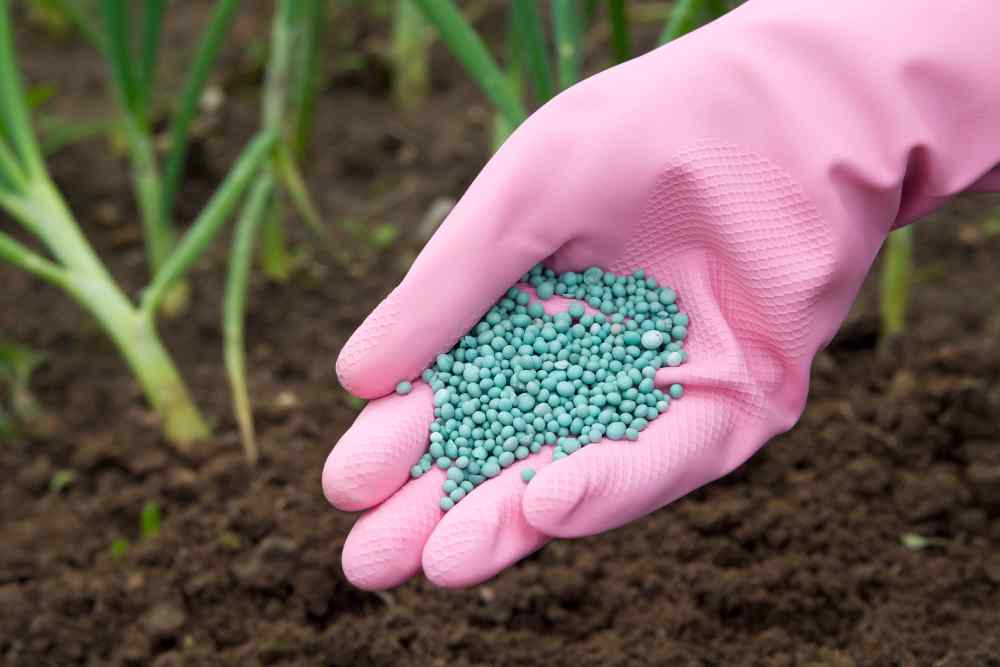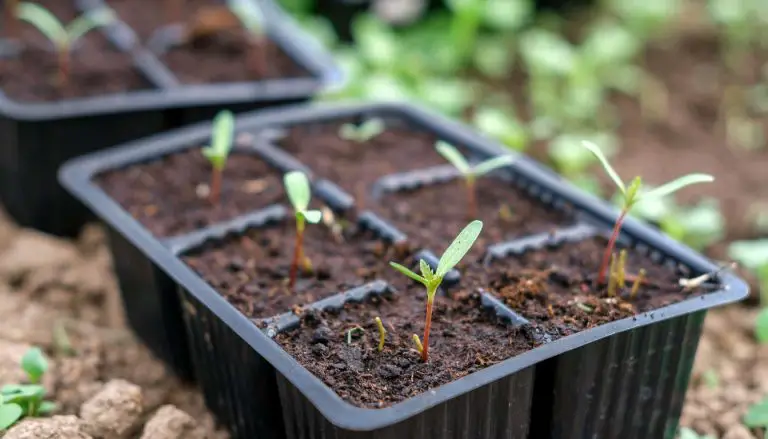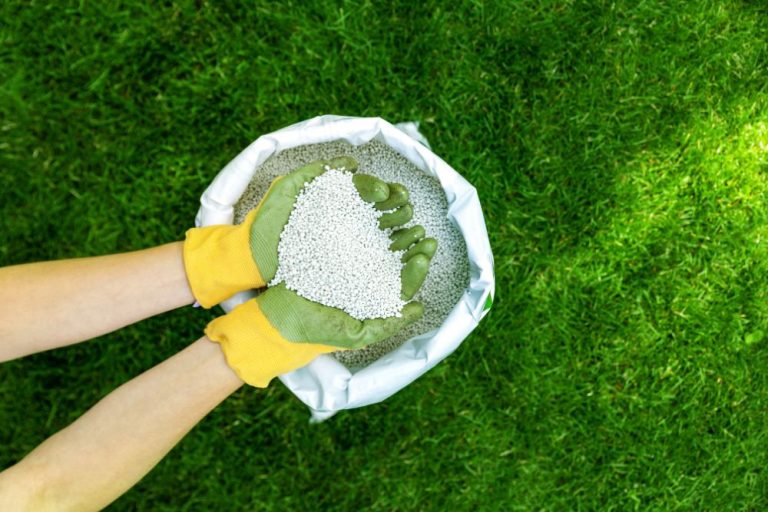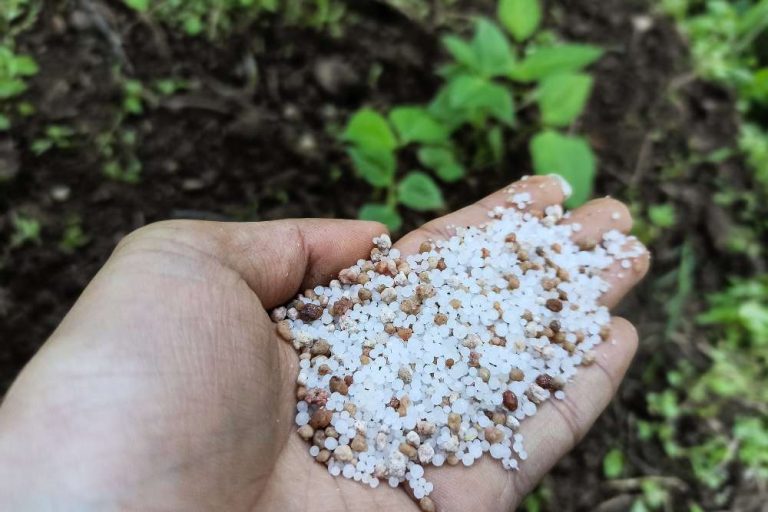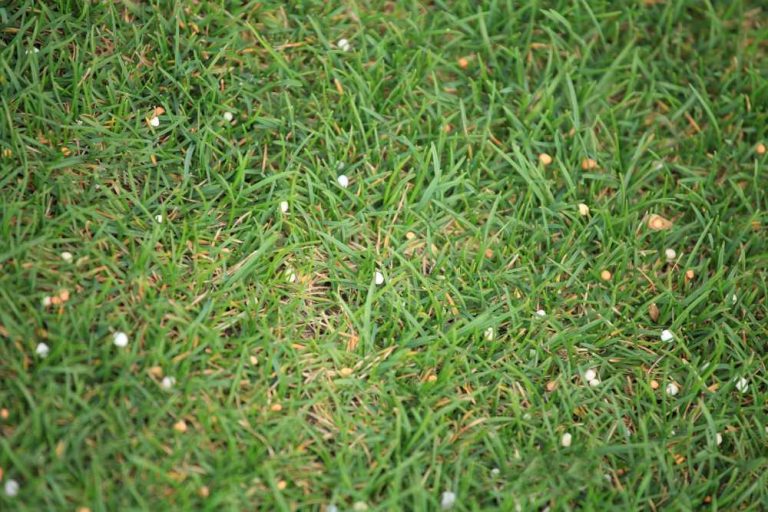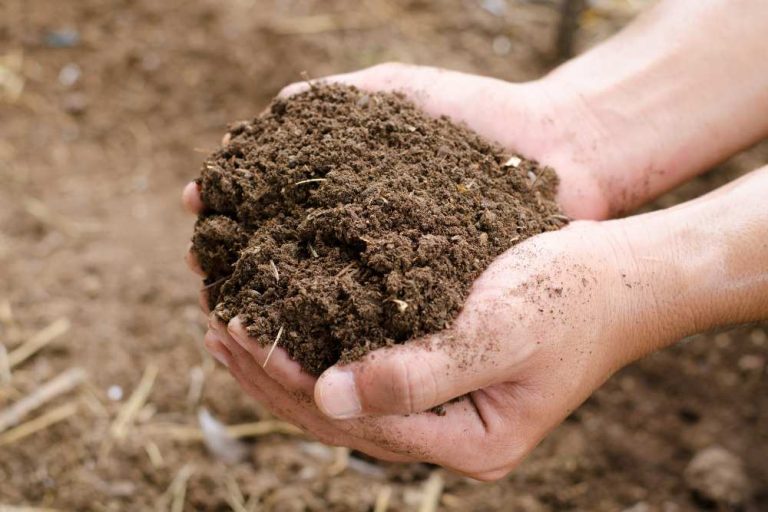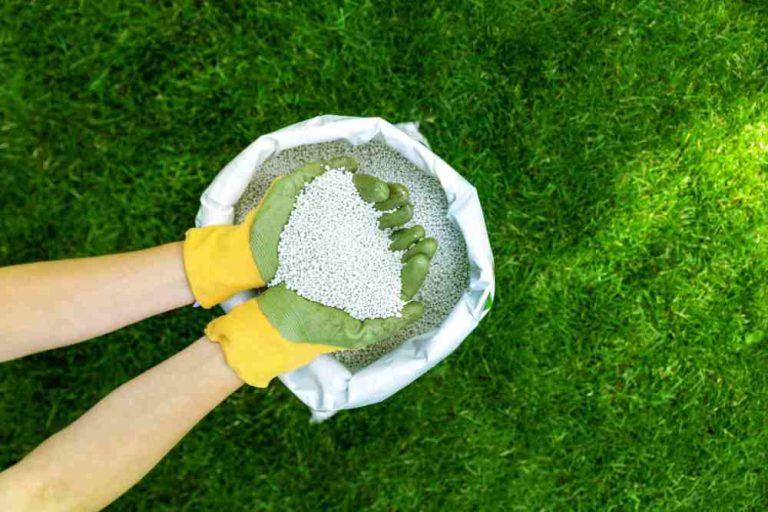Choosing The Best Fertilizer For Your Vegetable Garden: A Comprehensive Guide
To help our plants grow, we need fertilizer, but when is the ideal time to use it? What kind of fertilizer should we use, and how much of it? For beginners, in particular, choosing the right fertilizers for a vegetable garden can seem difficult and overwhelming.
What are those numbers? Which is better, liquids or granules?
We hope this useful guide will help new gardeners choose the Best Fertilizer For Your Vegetable Garden by providing the answers to these questions.
What Is Fertilizer?
If you’ve previously planted and harvested plants in your garden, the nutrients that those crops absorbed from the soil should be replaced in the spring before more plants are planted there. Here is where fertilizer comes into play. Fertilizers replenish nutrients that have been lost, ensuring that soil nutrient levels are suitable for healthy growth.
If you are a brand-new gardener, the first step is to get a basic soil test in the autumn to determine what kind and how much fertilizer to use to reach a “basic fertility” level. We understand that not every gardener has the time to do a soil test, but we strongly advise doing so. You might even discover that the fertility level of your soil has increased.
But use caution when applying fertilizer: unintentionally overfertilizing a plant is even worse than lacking its nutrients. Only the nutrients that plants actually need are used. Overabsorption can cause unnatural growth or other negative effects.
What Are The Different Types Of Fertilizers For Vegetables?
If you’ve ever visited the fertilizer section of your neighborhood garden center, you are aware of the wide variety of options available. It’s really overwhelming! You may note that some come in a liquid form while others are dry as the first item (e.g.: pellets, powders, or granules).
The good news is that in any form you choose, there is no right or incorrect response. It frequently comes down to convenience, use, and personal preference. However, strongly advise you to use natural and organic fertilizers while selecting the best fertilizer for your vegetable garden. The fertilizer guidelines apply to both processed and organic fertilizers.
Processed fertilizers (also known as “synthetic” or “chemical” fertilizers) are produced from salts of natural substances like phosphate rock (P), sodium chloride (NaCl), and potassium chloride (KCl), but these salts are refined to make the fertilizer more concentrated.
The majority of processed fertilizers, though not all of them, are quick-release in a water-soluble form to supply nutrients to the plant quickly, which can be advantageous in some conditions. (Some processed fertilizers have coatings applied to them to delay the release.).
Organic fertilizers are substances derived from plants that release nutrients gradually as the soil’s microorganisms break them down. The majority of organic fertilizers are slow-release, providing organic material to the soil so that you don’t need to apply them nearly as frequently.
They are frequently applied in granular form (spread over the soil). Additionally, unlike many synthetic, water-soluble fertilizers that plants can’t fully take, they don’t leak into and harm rivers. While most organic fertilizers release their nutrients gradually, some do so more quickly (examples are animal manure, biosolids, and fish emulsion).
Chemical / Synthetic -vs- Natural / Organic Fertilizer For Vegetables
Natural fertilizers and organic fertilizers are better rather than synthetic chemicals. Chemical fertilizers provide us with immediate satisfaction, but over time they seriously harm the fertility and health of the soil. With these kinds of products, burning the roots is also generally easier. They might even end up destroying the plant, causing damage.
They simply aren’t a healthy way to grow food, either. On the other hand, natural and organic fertilizers gradually improve the soil, providing vegetables with the rich, fertile base they require to thrive. Additionally, rich, fertile soil results in stronger, healthier plants, increased harvests, and wonderful, nutritious organic foods for us!
Granular Fertilizer
Spreading granular fertilizer around the plant’s base is a method of application. For gardeners who don’t want to worry about frequent fertilizing, it releases as it rains to fertilize plants gradually. Some plants may receive too much because it is difficult to determine how much you’ve applied and others not enough.
- All-Purpose Fertilizer (Granular):
- The investments made in creating high-quality soil and the proper application of fertilizer based on specific plant needs are the secrets of these extremely prolific plants. The packet of this fertilizer has the same quantity of nitrogen (N), phosphorus (P), and potassium (K). The bag’s N-P-K number could be 4-4-4, 10-10-10, or 20-20-20. All-purpose fertilizer aids in the plant’s overall growth by encouraging it to become taller, create deeper roots, and produce more flowers and fruits.
- High Phosphorus (P) Fertilizer (Granular):
- The P-value of this fertilizer is higher than that of the other two ingredients. The N-P-K number may appear on the package as 2-4-3, 5-8-6, or 10-15-10. This fertilizer promotes the growth of robust roots and plentiful fruit development. Periodic applications of high phosphorus (P) fertilizer are very beneficial for vegetables grown for their roots and fruits.
Water Soluble Vegetable Garden Fertilizers
The majority of liquid vegetable fertilizers are available as concentrated liquids, tea bags, or powders that dissolve in water. The fact that liquids are easily absorbed by the plant is their main advantage.
They also get work more quickly than granules. However, in contrast, to slow-release variants, they don’t last as long and require more frequent application. These fertilizers are easily accessible for consumption by plants.
Liquid fertilizers are advantageous for young and distressed plants. Additionally, sprayers can be used to apply liquid fertilizer to leaves. The benefit could be noticed straight away because the leaves immediately absorb the nutrients. The N-P-K ratio for the liquid fertilizer might change.
Slow-Release Vegetable Plant Food
By adding micronutrients and bacteria to the soil, slow-release fertilizer works. Depending on soil temperatures and conditions, the release of these plant nutrients promotes root growth and overall plant health. SRFs start this type of microbial activity considerably more gradually as opposed to quick-release fertilizers, which flood your plants with all these nutrients at once.
Worm Castings
Worm castings (sometimes known as “earthworm castings”) are a typical product that you may see in the vegetable fertilizer section. Worm castings, for those of you who don’t know, simply worm excrement. What is more natural than that? Don’t be discouraged from utilizing them because of the word “poop.” They have a similar texture to dirt, no aroma at all, and a similar appearance. Worm castings function similarly to slow-release products in that they gradually supply nutrients and improve the soil.
What Is The Best Fertilizer For A Vegetable Garden?
Let’s discuss how to choose the best fertilizer to use now that we are more knowledgeable about the variations among vegetable fertilizers. Fortunately, businesses make it simple by printing the N-P-K codes directly on the bag.
Nitrogen, phosphorus, and potassium are all referred to as N-P-K. These are the three nutrients that vegetables require in the highest amounts in order to grow and yield an abundance of food for us. Depending on the type of plant you’re feeding, you can choose a different ratio.
Balanced fertilizers with an NPK of 10-10-10 or 5-5-5 are the best for vegetables.
- Flowering vegetables – Vegetables that flower and bear fruit are known as flowering vegetables (tomatoes, peas, squash, cucumbers, etc.). The middle (P) value should be the highest since they require more phosphorus, which promotes flowering.
- Non-flower vegetables – Non-flowering veggies are those whose only edible parts are the leaves or the roots (carrots, chard, lettuce, broccoli, etc.). The first number needs to be the largest because these vegetables require high nitrogen (N) fertilizer.
Applying 1 pound of 10-10-10 fertilizer or 2 pounds of 5-10-5 (or 5-10-10) fertilizer per 100 feet of row is popular advice for vegetables. The first number represents the proportion of nitrogen by weight, the second is the percentage of phosphorus by weight, and the third represents the percentage of potassium by weight in the fertilizer product. This means that a fertilizer with the formula 5-10-10 has 5 pounds of nitrogen, 10 pounds of phosphorus, and 10 pounds of potassium per 100 pounds. Applying nutrients that are not necessary can harm the veggies you are growing, as was already mentioned.
Nitrogen is necessary for the growth of a plant’s roots, leaves, stems, flowers, and fruits. Nitrogen is essential for forming proteins in plants and gives them their green color. It is typical to have only vines and no fruit when too much nitrogen is sprayed on fruit crops like tomatoes and squash.
When corn begins to tassel, if nitrogen fertilizer is not applied, it might lead to poor ear production. Root crops like radishes, carrots, and parsnips may develop many leaves and tiny roots if excessive nitrogen is applied to them. Lower leaves begin to yellow in the absence of nitrogen, and the entire plant turns a pale green color. However, too much nitrogen causes death.
Cell division and the development of roots, flowers, and fruit require phosphorus. Stunted growth, poor fruiting, and poor flowering are all effects of phosphorus deficiency. Many of the chemical processes that support a plant’s capacity to survive and grow require potassium. Stunted growth and yellowing lower leaves are two prominent signs of a potassium deficiency that many plants experience.
When phosphorus is used in excess, it can kill the symbiotic fungi that the plant needs to produce mycorrhizal filaments, which decreases the ability of the vegetables to absorb iron and other minerals. The plant’s ability to make phytochelates, organic compounds made by roots to promote iron uptake, is similarly inhibited by too much soil phosphorus.
Collect a soil sample before using any fertilizer product, and send it to the soil testing lab for analysis. In the case that compost has previously been added, take the soil sample after the compost has been fully incorporated. After you receive the test results, it is advised that compost be applied. It is important to do soil tests, which may be done for less than $30. It is typically sufficient to test your soil every three to four years.
The results of the soil test will reveal what kind of compost has to be added. For instance, soil that has been affected by salt may need to be supplemented with low-salt compost or organic material like peat moss. Apply small amounts of nitrogen fertilizer several times during the growing season if you wish to fertilize your garden but haven’t had a soil test done on the soil.
A spade or garden rake should be used to spread fertilizer over the growing area and mix it into the soil before planting. For this application, use up to half a pound of nitrogen per 1,000 square feet. Only nitrogen should be present in this fertilizer, with either no or very little phosphorus, potassium, or other nutrients.
Apply a nitrogen fertilizer, such as ammonium sulfate (20-0-0) or bloodmeal (15-1-1), rarely during the growth season (i.e. every four to six weeks), at a rate of no more than 1/10th pound of nitrogen per 100 linear feet of row. Calculate the required pounds of nitrogen by the percentage of nitrogen in the product to determine the required amount of fertilizer.
Applying dry fertilizer to foliage should be avoided as it may cause burning. Apply two and a half pounds of ammonium sulfate (20-0-0) fertilizer per 1,000 square feet of garden space. Use three and a third pounds of blood meal (15-1-1) per 1,000 square feet if using it. To help the fertilizer penetrate the soil, water the fertilized area.
1. Burpee Bone Meal
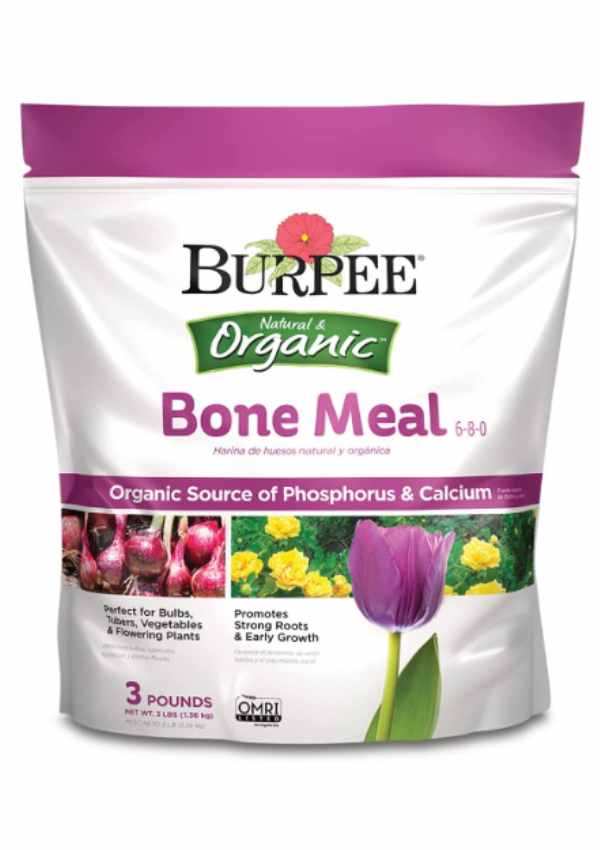
Bone meal is excellent for alliums like onions and garlic since it has a high nitrogen and phosphorus content (6-8-0 NPK). Alliums are long-season, heavy feeders. It encourages established roots and bulbs while boosting the photosynthesis of the scapes. It supports early-life development, making it a superb choice for establishing fruiting plants like tomatoes, peppers, and cucurbits.
However, keep in mind that using high-nitrogen fertilizers too early in the life cycle of fruiting plants can result in foliage overgrowth. Pulverized bone, typically from byproducts of the meat industry, is used to make a bone meal.
It’s a beneficial way to put that trash to use while giving plants access to a variety of macro- and micronutrients, including calcium, magnesium, and iron. In following the instructions on the package, scatter it over the root zone or rows of alliums early in the growing season and again at midseason, or combine it with your seed-starting media for other varieties.
2. Alaska Fish Emulsion
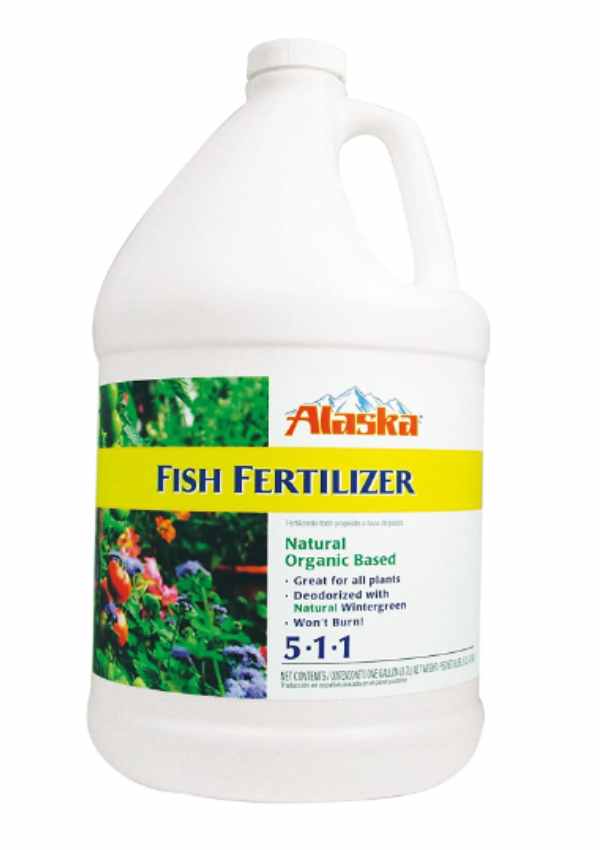
Alaska Fish Emulsion is a great product for leafy crops, such as lettuce, spinach, and endive, with a 5-1-1 NPK ratio. The high nitrogen content is just what they require to grow big, thick leaves that are resistant to disease and pests. Brassicas, cucurbits, and nightshades can also be grown with it, but it should only be applied sparingly and very early on.
Regular applications of fish emulsion will benefit the growth of large, healthy bulbs in onions and other species that develop bulbs. Fish emulsion can be quickly absorbed by plant roots, which is good for quick effects but also implies that it will be soon depleted.
This has advantages and disadvantages since, unlike when using chemical fertilizers, the extra nitrogen won’t linger to promote foliage overgrowth in kinds that don’t require it. It can be administered as a foliar spray to plants like lettuce and spinach because their thin leaves will absorb the available micronutrients through the leaf surfaces this is in liquid form and you can dilute it with water.
3. Blood Meal
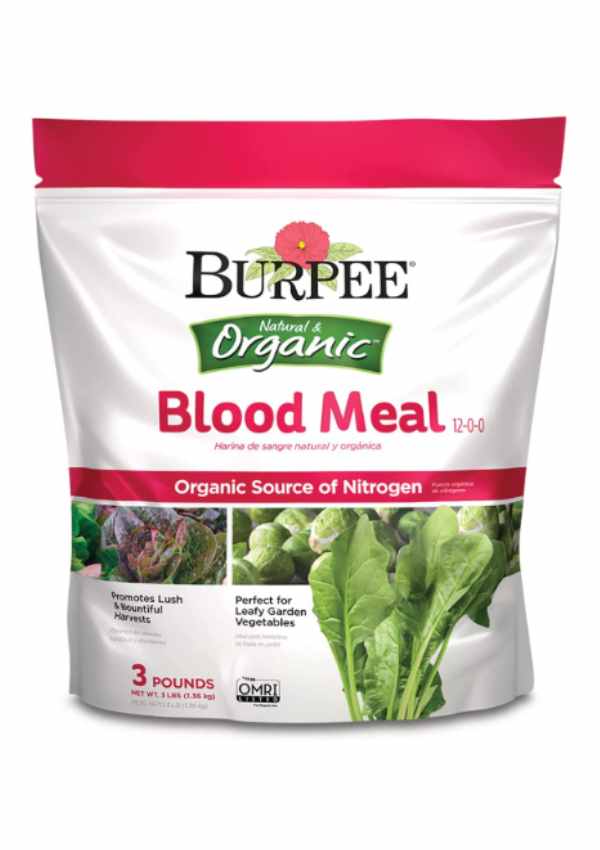
An excellent technique to provide your vegetable plants nitrogen is to add a blood meal to your garden. You can add extra to the garden each month during the growing season by mixing it with your compost when you top-dress the garden in the spring. Are you using containers to raise your vegetables? Just combine your potting soil and blood meal before filling the container. They’ll get a lot of nitrogen from it.
4. Rock Phosphate
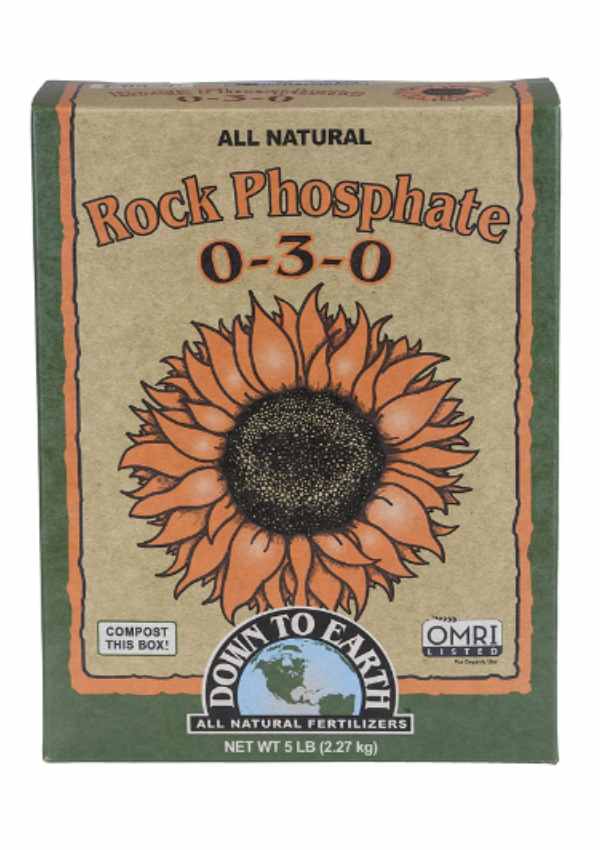
The lack of nutrients in most garden soils nowadays is one of their main issues. This is where enriching your soil with rock phosphate, is often known as rock dust. Large and little pieces of bedrock can be found all across our land. The minerals that have been released from the rocks over many years have given our crops a delicious taste, even though we didn’t have much luck when we used to till our gardens.
However, you can also do this in your garden! Your garden will produce more, have better-tasting food, and have better root and flower growth with the addition of rock phosphate.
5. Worm Castings
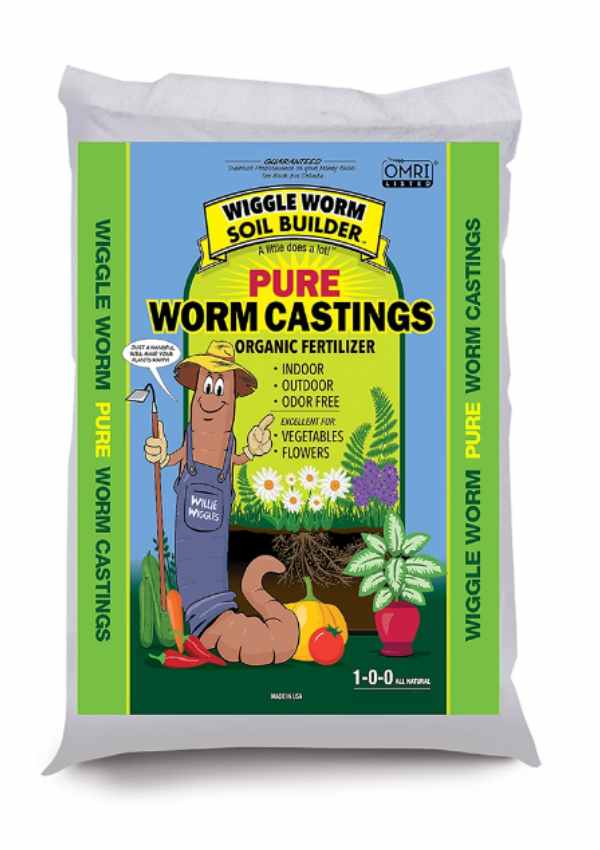
One of the best organic fertilizers you can use in your garden is earthworm castings. Not only do they feed your plants, but castings also enhance the structure of your soil. You should attempt this if your soil is particularly sandy or clayey.
In the spring, simply scatter 1/2 to 1 inch of worm castings over the top of your plants. You’re done if you’re using the no-dig technique. If not, simply incorporate the worm castings into your soil and you’re ready to start planting. You can side-dress your plants with more worm castings later in the growing season.
6. Down To Earth Acid Mix

Some garden-variety plants prefer a substrate that is slightly acidic. Among these are carrots, cucumbers, radishes, garlic, and blueberries, it should be noted that these are fruits rather than vegetables. A fertilizer designed specifically to slightly enhance acidity is beneficial for acid lovers. Nutrient absorption is hindered if these parameters aren’t satisfied, and the plant will suffer. It has an NPK ratio of 4-3-6 and comprises cottonseed meals, a byproduct of the cotton industry.
7. Ecoscraps Leafy Greens Plant Food
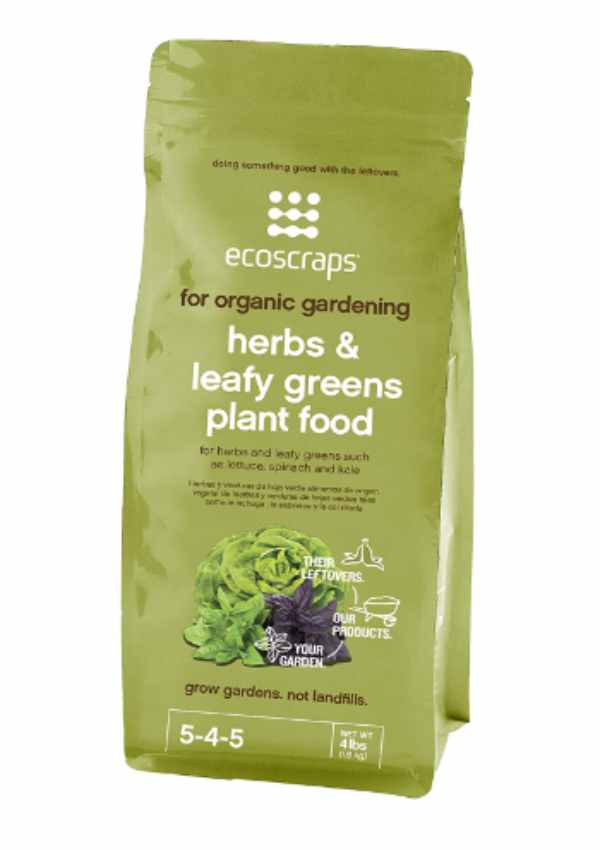
A mixture called Ecoscraps Leafy Greens Plant Food contains organic components that are recycled from food industry waste. With the benefit of a 5-4-5 NPK ratio that is assured, It is the finest alternative to your own compost this granular variety works well for lettuce, spinach, and other crops that require a foliar boost because it is designed for herbs and leafy greens.
But because it’s generally well-balanced, it can also be helpful for other crops, including onions, corn, and brassicas like broccoli and cabbage, that benefit from a little extra nitrogen. Three cups of granules should be spread over a surface area of 50 square feet, then thoroughly raked in. Follow the directions on the packaging when scheduling feedings.
8. Tiger Bloom
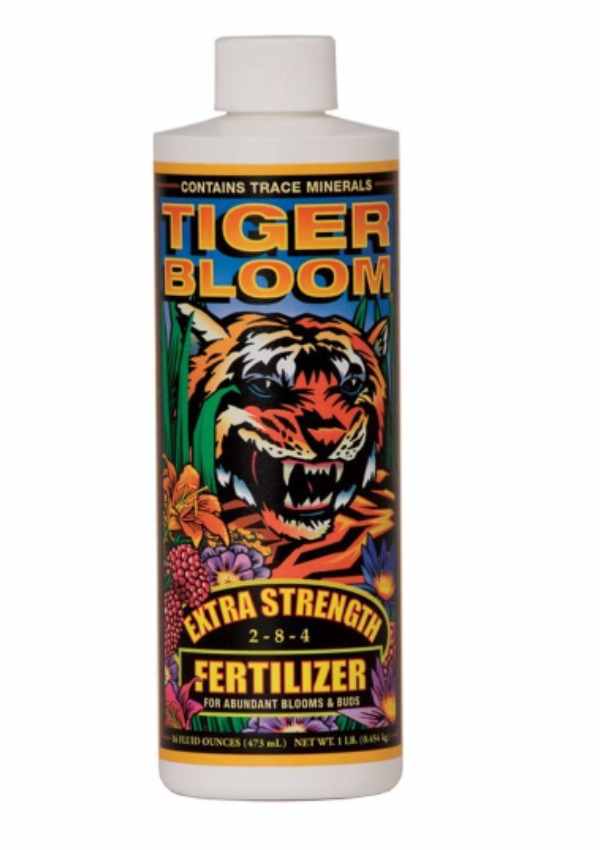
The Tiger Bloom should be used during fruit setting and flowering. This concentrate has a greater phosphorus concentration since it contains 2-8-4 NPK. Adding this liquid at the beginning of budding will assist to boost development for better retention, leading to an improved maturity rate because phosphorus is crucial for flowering and fruit production. The increase will benefit fruiting species including tomatoes, peppers, and others.
9. Feather Meal
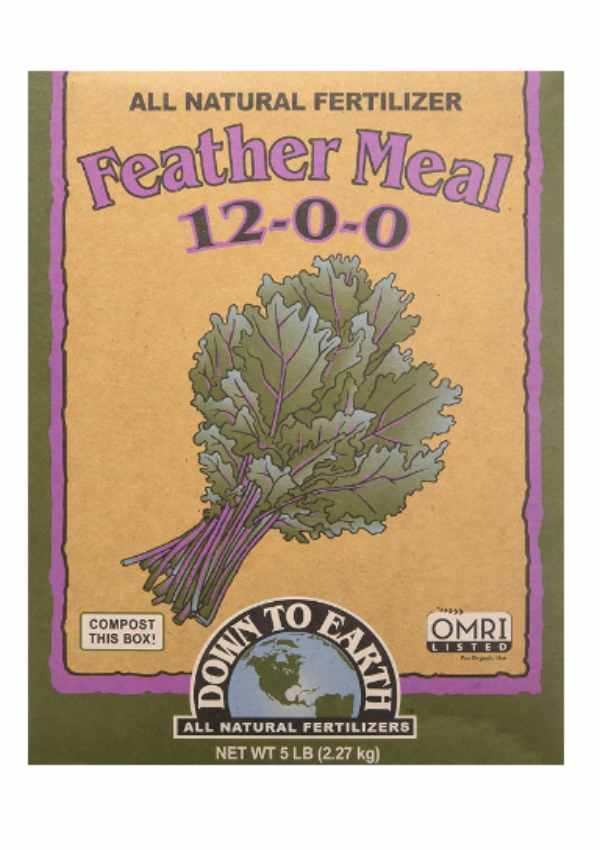
The dried and ground feathers of chickens are used to make feather meals. For your vegetable garden, it’s a great slow-release nitrogen supply. It is especially useful for crops with lengthy growth seasons and high nitrogen requirements, including corn and tomatoes. Throughout the growing season, feather meals can be side-dressed or tilled into your soil.
10. Growganica Kelp It Real Seaweed Extract
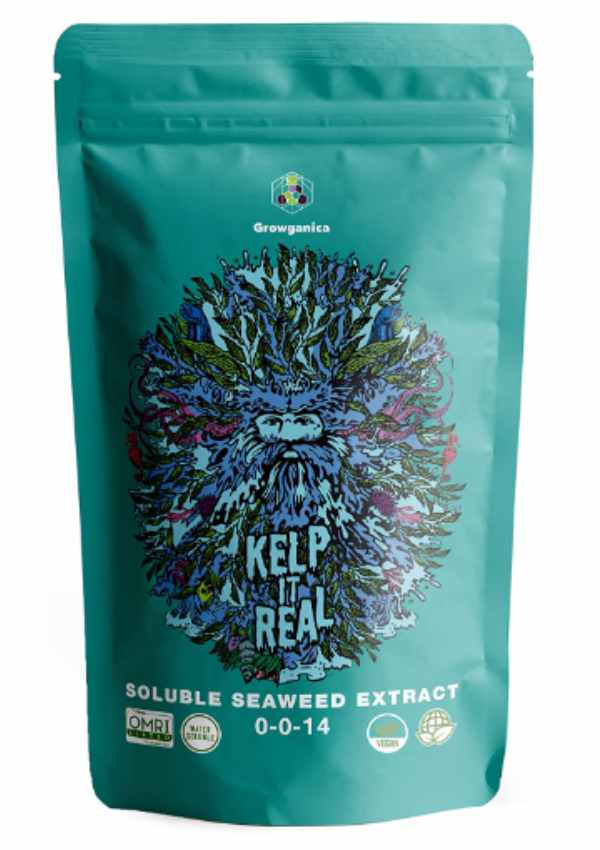
This powder, which is best used as a diluted foliar spray, is especially well-liked by potatoes, maize, okra, and strawberries. Additionally, it can be applied as a liquid soil conditioner, which supports roots and enhances water absorption. Blooming plants, such as tomatoes, squash, peas, and cucumbers, will also profit from kelp. The high potassium content of this product will replace the energy lost during flowering and budding.
- 15 Ingenious Kitchen Garden Ideas to Cultivate Freshness Right at Home - April 7, 2024
- 10 Top Picks Best Plants for Open Terrarium - April 2, 2024
- 21 Easy and Cheap Walkway Ideas for a Charming Garden - March 31, 2024

